(249 products available)






































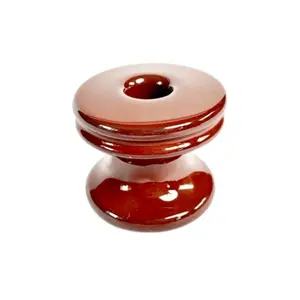










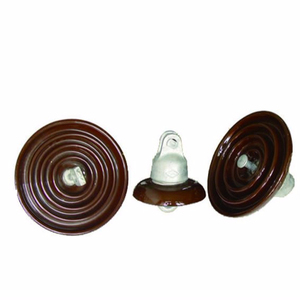
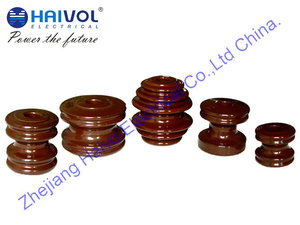
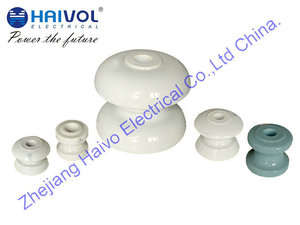
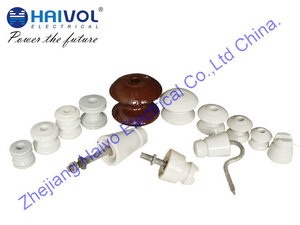
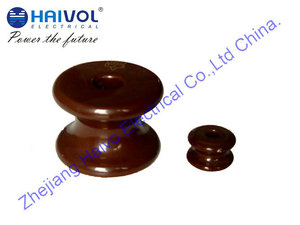











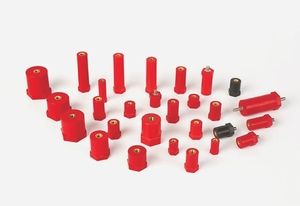








































































Spool electrical insulators are critical in preventing electricity from travelling through support systems such as power lines. Common types include:
Transmission Line Porcelain Insulators
The main use of transmission line porcelain insulating materials is to support conductors while preventing current from travelling to the ground. Their design provides a weather-experienced surface that can stand mechanical stress. They are usually made in helical shapes to provide longer surfaces over which electricity has to travel, adding insulation.
Insulator Pins
Pins are often used in low voltage applications to support conductors on cross-arms or in poles. The Electrical porcelain spool insulator used for pin insulators often has a comparatively smaller spool design as only a short part of the line is under tension. However, porcelain provides good insulation. It is also applied in telephone wires or cable installations under low voltage.
Suspension Insulators
Suspension insulators are used to suspend cables in powerlines where cables need to be well extended, such as in long distance transmission lines. Porcelain suspension insulators have several discs linked together, making them flexible and able to balance cable tension and provide insulation. This is critical in geography that necessitates high voltage transmission.
Stay Insulators
The function of stay insulators is to insulate the stay wires that provide support to the tension on the transmission lines. Porcelain stay insulator is fixed on stay wire to prevent electricity from passing through the wire to the ground. Stay insulators are usually used where additional stay support is required for the insulation system.
Straup Insulators
Straup refers to a type of insulator comprising a circular porcelain spool with a flat base and an outward shell rim on every side. Its purpose is to prevent exposure of electrical equipment installed on the ground to stun. Because of the design, it provides more surface area than the rim which adds to the insulation.
In industrial applications, spool insulators made from electricity conductive porcelain have multiple types of uses:
Electrical Grids and Power Transmission
Electrical porcelain insulators are mainly applied to insulate conductors and help support transmission lines. Large porcelain electrical insulators are usually applied in high voltage power transmission to maintain safety and effective operations. Due to their strength, they can sustain high mechanical loads together with adverse weather conditions.
Renewable Energy Systems
Spool insulators are also used in photovoltaic (PV) solar farms and wind power generation systems and power generation application. They are mainly applied in solar trackers and wind turbine generators. Porcelain insulators assist in providing stability and insulation under outdoor conditions by guaranteeing the efficient operations of these renewable energy systems.
Railway Systems
On electrified railway system, porcelain spindle insulators are employed to support the overhead line contact wires that deliver power to trains. These insulators must have the ability to endure dynamic loads, vibrations, and weather elements. Due to their strength and durability, porcelain insulators are perfect for providing long lasting solutions under heavy rail operations.
Construction and Building Wiring
In construction, porcelain spool insulators are used in building wiring and maintain the insulation of electrical cables within facade systems. They are often used in historic buildings or structural facades where modern insulation may not be easily incorporated. These insulators help prevent electrical hazards, maintain energy efficiency, and ensure that systems operate properly.
Telecommunications
Telcom systems and telephone lines still use porcelain insulators to support wires and provide insulation. Even with present digital technology, vintage and modern telecommunication still utilize porcelain insulators because of their durability and effectiveness in providing clean signals without current interference.
Material Composition
Electrical porcelain is made by mixing feldspar, kaolinite, quartz, and other clays and firing them in a kiln. This forms a rigid, strong, and dense material that can easily be adapted to different shapes.
Mechanical Strength
The insulators have to be able to carry mechanical load, such as support lines or resist bending under weight. This relates to the tensile strength of the material.
Electrical Characteristics
Porcelain insulator has a high dielectric constant. This helps to provide better resistance to electrical current and better insulation, particularly in high voltage conditions.
Surface and Leakage Path Resistance
Good insulator surfaces and leakage path resistances help to retard the electric discharge from conductor to ground. Surface resistance involves surface treatments applied, while leakage resistance is the distance over which the current will tend to travel across a wet surface.
Preparation
The line is supposed to be de-energized before any work is done. The existing insulators are to be removed carefully without causing any damage to the line or the pole.
Mounting the Insulator
The new pour insulator should be mounted on the crossarm or pole in the correct position as per the manufacturing specification.
Securing the Insulator
To guarantee stability, every insulator should be secured properly. Nuts and bolts should be tightened in case of a pinned insulator.
Reconnecting Conductors
The electrical lines are supposed to be reconnected to the insulator once it is fully secured. This allows each conductor to be connected to the correct insulator.
Testing and Inspecting
Upon the completion of the installation, an inspection is supposed to be carried out to ensure that the work is properly done. Use of multimeter will measure isolation to check whether proper isolation levels are achieved.
Routine Inspection
Regular inspections using schedule enabled maintenance and repair. Inspecting using tools such as binoculars helps spot cracks, chips, or visible breaks without climbing poles. Close monitoring for signs of physical damage, contamination, or erosion helps detect insulator wear out early.
Cleaning
Soiled insulators have reduced effectiveness. Cleaning should be done with wipe or wash application of water or cleaning solution to remove contaminants like dust, grease, or mineral deposits. It should be done at low voltage or during system inactivity.
Damage Assessment
During inspections, measure activity pollution level and check for visible cracks, chips, or physical damage. Use multimeters of megohmmeters on the insulator to test for accurate insulation.
Replacement of Damaged Insulator
Any found to have significant wear and tear or damage must be replaced as soon as possible to prevent electrical failure. The line has to be de-energized before removal of any old or damaged insulator.
Since spool insulators (electric isolation devices) are used in high voltage applications for better safety, certain quality checks must be conducted before engaging them. They include:
Quality of Material Composition
The material composition quality directly correlates to the performance characteristics of insulators. The porcelain mixture properly processed and homogenized gives superior dielectric features. Properly fired porcelain attains optimal density, resulting in minimal cracks or voids, enhancing mechanical and electrical viability.
Porcelain Manufacturing Process
The manufacture of porcelain insulator involves a process of ceramic technology. It requires a meticulous process of shaping, tearing, and baking at a set temperature. Materials used have to be sourced responsibly and ethically. Manufacturers should have certificates like CSR that show they are environmentally friendly while treating their employees well.
Mechanical Testing
This is done to check tensile strength and bending. Porcelain insulators are supposed to endure mechanical stress, such as wind or cable weight sagging. Mechanical assessment protects against early rupture or failure during operation. Insulators with adequate mechanical strength sustain adverse weather and longer operating conditions.
Electrical Testing
Insulators should go through electrical viability tests using reference voltage levels to measure insulation resistance. The result must be greater than a minimum threshold so as not to expose active electrical lines to risk of short-circuiting. This is particularly applied to high tension electrical porcelain insulators.
Thermal Resistance
Electrical application cause materials to heat. Therefore, it should be possible for the spool insulator to resist thermal expansion and contraction without cracking or reducing its insulating ability. Withstand prolonged use and lower heat increase.
Weather Resistance
Insulators need to be rigorously tested for their ability to resist precipitation, hail, and sunlight exposure. This ensures long term outdoor viability under diverse climatic conditions. It also boosts environmental compatibility.
Safety Certifications
Insulators should have essential safety feats like CE and ISO to comply with local or international regulations. Enterprises employ certified materials to ensure safety and be legally compliant. ISO certification deals with quality, and CE deals with safety.
A1: It is to support electric conductors in an electrical system while preventing electric current from travelling through the conductor and grounding system. Its role is to provide mechanical support while withstanding electric pressure and environmental conditions. This maintains system safety and efficiency.
A2: Insulators are made of different materials according to application requirements. Most of them are made of ceramic materials, including porcelain, which provide insulation integrity and mechanical strength. Others are made of glass, rubber, or polymer, depending on their operational needs.
A3: Porcelain insulators offer great strength, durability, and weatherability with minimal chances of cracking under mechanical stress or thermal expansion. It is still very effective after many years of exposure to environmental factors. In addition, porcelain is impermeable; hence, water won’t penetrate and render it effective for future use.
A4: The manufacturing process of porcelain involves tightly compacting the ceramic grains and tightly binding them through vitrification. This forms a dense and solid structure with minimal porosity. Porcelain has excellent mechanical and dielectric strength; thus, it withstands mechanical loads and high electro expulsion, making it a better insulator.